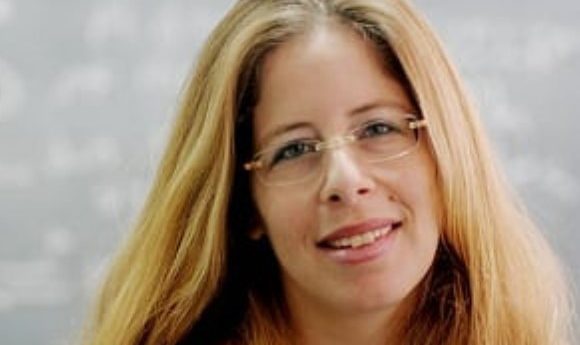Probing the proteasome

At the recent Celebration of Native Mass Spectrometry in Oxford, we caught up with Michal Sharon to talk about her research and the fascinating evolutionary history of the 20S proteasome.
Would you like to introduce yourself and your institution?
I’m Michal Sharon from the Weismann Institute of Science from the Department Of Biomolecular Sciences.
You gave your presentation earlier; would you like to give a brief summary of your presentation?
We were trying to answer the question of whether mass spectrometry can provide structural information on protein complexes that are highly similar to one another, specifically we were focusing on paralog protein complexes, protein complexes that emerged from a common ancestor but then diverged along evolution. We were looking at 20S proteasome complexes from five different organisms: archaea, yeast, rat, rabbit and human. We used different native mass spectrometry techniques to find structural features that were either conserved or diverged among these proteasome complexes along evaluation. Specifically, we applied ion mobility, surface induced dissociation, collision induced dissociation, collision induced unfolding profiles and top-down pseudo-MS3 experiments, in order to study the structural properties of the ortholog proteasomes.
Throughout that study, it seemed that the yeast proteasome defied your expectations in terms of the kinetic stability and its size and mass. Do you have an idea of why that might be?
We naively thought that we would see a linear trend along evolution and as the complexes originate from more developed organisms, they will be larger or more stable, but actually this was not the case. As you said we saw that yeast was the most stable and biggest proteasome, more than mammalian complexes, and it could be that stability is not a feature that is advantageous, maybe the more flexible structures are those that facilitate functionality. Indeed, the number of intrinsically unstructured proteins that are identified is growing, so maybe flexibility in structure is a feature that assists function.
And how does the topic of the proteasomes and their evolution, tie into your current research?
Our research is focused on different aspects of protein degradation and one of them is indeed the 20S proteasome. Our goal is to identify the mechanisms of regulation of this protein complex. We just recently found a completely new family of protein inhibitors that specifically coordinate the 20S proteasome function. We named them catalytic core regulators (CCR), these are proteins that physically bind the 20S proteasome and coordinate its function. During this study, we wanted to understand if the proteasomal function is conserved across evolution. Therefore, we isolated proteasomes from different species and investigated whether the CCRs that we discovered, have the capacity to inhibit the ortholog complexes. Indeed, we determined that the functionality of the CCRs is conserved. This study also led us to investigate the evolutionary trajectories of the proteasome, as I described.
Another thing that we are highly engaged in and I think is important for the native mass spectrometry community, is performing analysis of proteins and protein complexes without prior purification. We have just shown that it is possible to analyze bacterial recombinant proteins directly from crude cell lysate. Acquiring native mass spectra directly from the crude sample without the need for all the hassle, time and effort of protein purification. We have also shown that this method is applicable for eukaryotic expression systems generating secreted proteins. The analysis is done directly from the crude growth media without the burden of protein purification. I think this discovery will highly promote the use of native mass spectrometry, because it considerably shortens the gap between protein production and characterization, one can immediately take an aliquot of the sample and analyze it without purification and obtain in-depth information about expressibility, solubility, structure, assembly state, post-translational modifications, associated co-factors or other biomolecules and so on. So, we took a feature that is considered to be a disadvantage of mass spec, which is the dynamic range, the fact that if you have highly abundant proteins they will mask the less abundant ones, and we turned it into something positive. Because in this case we only want to detect the highly abundant proteins and we don’t want to see the background endogenous proteins of the expression system.
In terms of challenges you face during your research, what would you say is your greatest challenge and what would you say needs to change or be discovered in order to drive forward the next big step in native Mass spec?
The challenge is looking at less abundant proteins, proteins that have low quantities in the cells, if you don’t manage to purify them or if they are found at very low quantities, they will be blind to us. But now that we realized that we don’t really need highly purified samples we are trying to develop simple enrichment procedures to increase their abundance and maintain the biological diversity, in order to subject them to native mass spectrometry analysis. I think this notion will open the field of native mass spectrometry to many new biological systems that were untouched before.
In terms of this conference, what have you enjoyed so far and what are you looking forward to tomorrow?
I think there is a lot to hear. I’m looking forward to seeing how technology progresses and how it opens new areas of research, how things that we couldn’t see before because of the lack of technology, the lack of sensitivity, lack of resolution, can now be accessible enabling us to peel another layer of information
